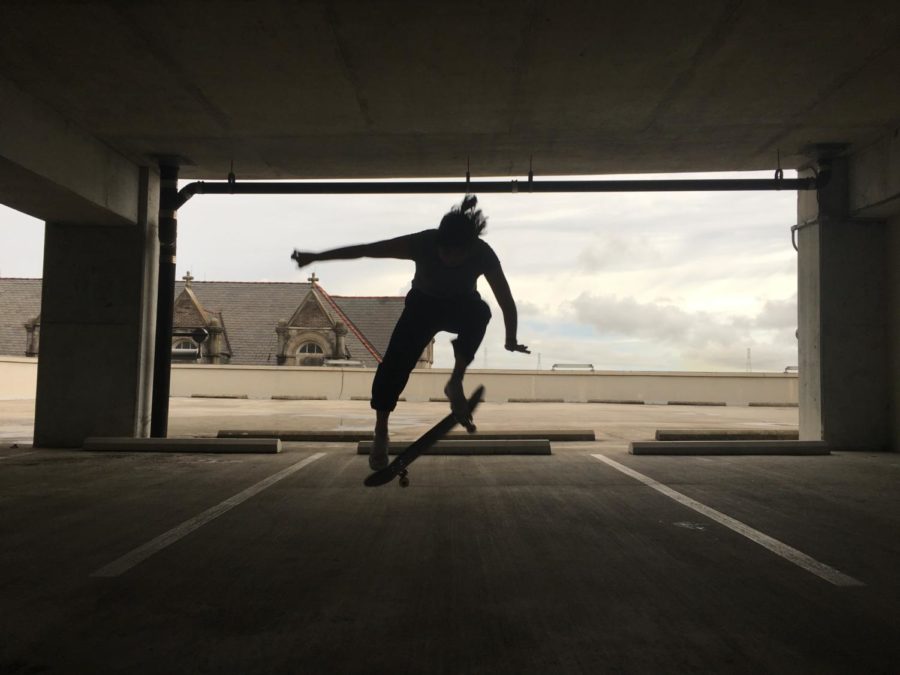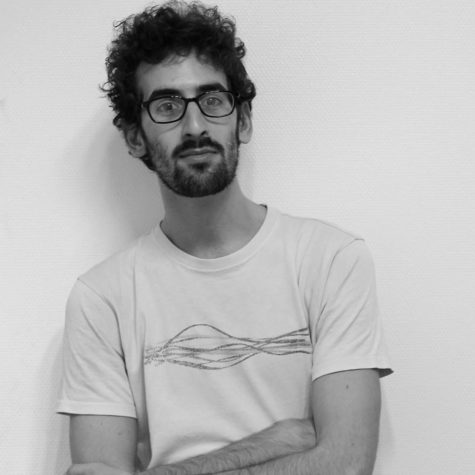Meet the Tulane & Loyola skateboarders
Photo credit: Kaylie Saidin
September 15, 2018
In every urban city, skaters and skateboard culture can be found. Despite New Orleans’ decrepit roads and bountiful potholes, the members of the community still find a way to do what they love.
Anyone who’s been to Loyola or Tulane’s campus has seen the skateboarders near the infamous “wall” and walked by them on McAlister—but who are they? What’s it like to be a skater in Uptown?
Many skaters give credit to the roads of New Orleans for shaping the way that they do tricks and navigate on a skateboard. Unlike other metropolis’ with skate parks and smoothly paved roads, New Orleanian skaters may find themselves ollie-ing over every crack.
“I think because there are a lot fewer spots that are accessible to me— like, most of the sidewalks and roads are so cracked you can’t really skate on them, and the closest skate park is a 20, maybe 30 minute drive away— it has definitely become something I have to work into my life more,” said Sarah Hill, a Tulane medical school grad student and beginner skateboarder.
However, this has not deterred Hill. “Because it’s something I’m really into doing, it makes it that much more important that I make time for it,” she said.
A Loyola student and skater, Jacob Schmitt, explained that he values the geography of Uptown in his skating.
“It’s cool because New Orleans is really flat, which is chill for skateboarding and the kind of tricks that I try to do. I’m still learning a lot. Hills are chill cause yeah, you can go down them, but you can’t ride up them. So I do like skating in New Orleans because you can ride your board wherever,” said Schmitt.
The only skate park in New Orleans is Parisite— a DIY, community-built project that began four years ago and continues to grow.
Parisite was built under the freeway overpass off Paris Street by volunteers who had a simple goal: to build, according to their website, “the perfect place to skate: a big concrete slab, hidden by trees, a highway, and some railroad tracks.”
Despite challenges, skaters came together to obtain difficult permits and construct the park. The uniqueness of Parisite’s development, coupled with the fact that it’s the only skate park in such an urban city, creates a community like no other.
“It’s cool to meet people at the skate park. I’ve talked to some of the guys who are there every day, and everyone is really encouraging,” said Hill.
“I go out to the events that Humidity and Parisite host, like the chili cook-off. Sometimes I’ll go watch the contests,” said Schmitt.
In Uptown, skaters frequent the most well-paved areas: Tulane and Loyola campuses.
“I skate in the alley on West Road by Tulane’s campus, mostly. And out in front of Yulman stadium, that’s a good spot,” said Schmitt.
“I like to skate on the smooth concrete in McAlister walkway outside the LBC,” said Hill.
When asked if the non-skating community at the universities was supportive, Hill shrugged and smiled.
“I’ve been shushed before on McAlister, like while I roll by, even though that’s one of the busiest areas in Tulane,” she said. “ Generally my reaction is just to ignore people. I kind of tend to ignore everyone if I’m skating alone, but I definitely think people are more shocked to see a girl skating than they are annoyed. I think that as a girl I get it better than the boys do.”
Despite the supposed negative societal connotations and the to-themselves nature of skaters, the New Orleans skateboarding community thrives. They have been localized with only one skate shop and skate park. They have to skate on cracked streets, campus stair sets and parking garages. And as a result, their skating, and their community, is more cohesive and unique.
“Every interaction that I’ve ever had with people who have been skating in New Orleans for a long time has been really positive,” said Hill. “It’s definitely a sport—it’s physically and mentally challenging.”









